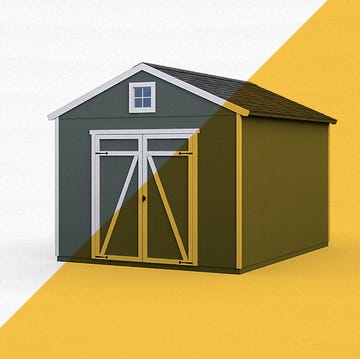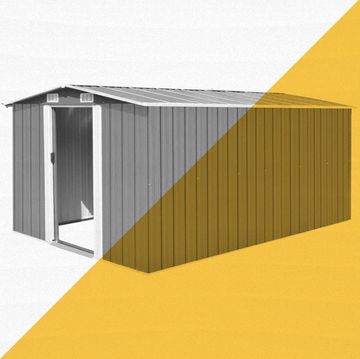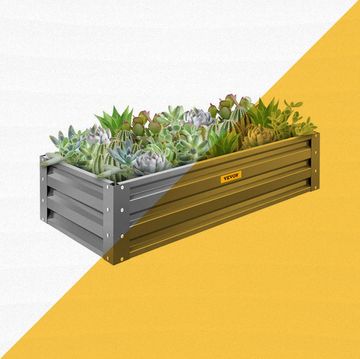Opening your backyard swimming pool for the season takes more than filling it up and jumping in. Larry Biscornet, president of LBI Swimming Pools in New Rochelle, N.Y., has been in the swimming pool business for 50 years, and he knows the importance of opening a pool correctly—both for the health of the swimmers and the pool. "If a swimming pool is opened properly, you can be assured of proper operation and chemical safety," he says. Here's your eight-step guide to getting ready for lazy summer afternoons.
1. Don't Empty Your Pool
First, Biscornet says, never empty your swimming pool, even if you live in a really cold climate, unless you have no other choice, such as if you need to do structural work or your pool hasn't been covered and there are too many leaves at the bottom to remove. (Also: Get a cover. Really.) That's because draining the pool can bring big problems. For example, an empty pool in a high water table can lift out of the ground without the weight of the water holding it down.
Biscornet says most pool owners aren't even aware of the risk. "People think they're going to empty and clean their pool but they either do it in a very wet season when there's a high groundwater table, or their swimming pool actually sits in a high water table," he says. "When you empty a pool in a high water table, it's very possible that the pool will pop out of the ground like a boat." That could mean a complete pool replacement.
2. Clean It Up
Start the process of bringing your pool up to shape with a "chemical open." Put the filtration system together, clean out all the baskets, and remove any plugs that you put in when the pool closed last year. For now, leave the cover on the pool while you're working on it.
3. Top It Off
If the water level has fallen over the winter, top it off. Make sure to clean the filter before you turn it on. Clean a cartridge filter by removing the cartridge and wash with a hose. If you have a D.E. filter, you might need to take it apart, clean it, and reassemble it. If you have a sand filter, set the filter to backwash, which will clean the sand. Then turn it to the normal setting.
4. Have a Pro Test Your Water
Biscornet recommends having the water professionally tested. Take a water sample to a swimming pool store, Biscornet says, and they'll test the water for you, usually for free (and maybe some up-sell). "It's a good idea because they'll do a complete test," he says. "They'll test the mineral content of the water, along with the total alkalinity and the pH and the chlorine levels." They'll tell you which needs to be adjusted and by how much.
You should also pickup your own DIY pool chemistry testing strips. Just dip the strips in the pool water and then hold them up to the color chart on the bottle. This is an easy way to measure the chlorine and PH on a regular basis.
5. Balance Your Chemicals
Time for some chemistry, based on your pool pro's analysis. Here are Biscornet's recommendations:
PH levels between 7.2 to 7.4. The pH level dictates how much chlorine turns into hypochlorous acid in the water. Use soda ash to increase pH; muriatic acid or sodium bisulfate to decrease.
Total alkalinity from 80 to 120. Alkalinity is a pH buffer—pH levels will be consistent if the alkalinity level is correct. Use sodium bicarbonate to increase alkalinity, muriatic acid to decrease it.
Calcium hardness from 150 ppm to 250 ppm (parts per million). This is directly dependent on the hardness of the water. The softer the water, the more calcium it will absorb from its environment. "If you don't put [calcium] in the water, it will take it from the grout in the tiles," Biscornet says. "It will actually ruin a marble dust (a finish product), it will even effect vinyl." Adjust the calcium hardness by using calcium chloride.
Chlorine from 1 ppm to 3 ppm. A popular product for backyard in-ground pools are cyanuric-based tablets (the ones that look like large white hockey pucks). "Cyanuric acid inhibits the sun's ability to burn off chlorine," Biscornet says. "It's like a sunscreen for the water."
You can put the tablets in your skimmer baskets, but their low acid content means they'll eat metal—a problem if your pool has a metal filter system or a heater with a copper heat exchanger. So Biscornet recommends getting a plastic chlorinator, which attaches to the filter system. Get a pro to hook this up.
6. Wait for the Water to Clear
Don't dive in yet. The filter has to be cleaned every day until the water is clear. Expect the entire process to take about a week. You may have to add chlorine to keep it at the right level. Only when the water is clear and you can see the pool floor should you remove the cover. Remove the cover too soon and you'll end up with more leaves and pollen and debris to clean out.
7. Housekeeping
After you've removed the cover, time to vacuum all the leaves and debris from the bottom.
8. Maintain
For the rest of the season, keep the filter clean, vacuum the pool each week, and test the chemical levels every day. Biscornet also advises having a pro test the water once a month.













